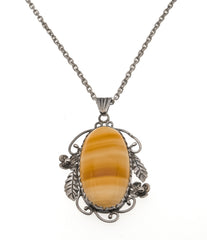Duette - Art Deco Signed 'Coro Duette' Rhodium Cerise Pink Moonglow Lucite & Crystal Rhinestone Brooch/Dress Clips (ADBR011)
Rarities Antique Jewelry
Duette - Art Deco Signed 'Coro Duette' Rhodium Cerise Pink Moonglow Lucite & Crystal Rhinestone Brooch/Dress Clips. This innovative brooch is crafted from rhodium over metal. The brooch features 10 round cabochon art glass gemstones, numerous round cut faceted crystal rhinestones, Art Deco styling, and quality craftsmanship. This rare piece is designed as a brooch, which can also be taken apart and worn as dress clips. The brooch is made in the form of a bow, which showcases silver colored ribbons adorned by sparkling crystals and cabochons which add a pop of cerise color. The back of the brooch is signed 'Coro Duette' and a patent number PAT.NO.1798867. There is a pin on the back, which securely locks into place in a rotary type mechanism. The pins on the back of the dress clips have a perfect spring and close securely. This rare Art Deco era example of a Coro Duette is highly collectible and can be worn beautifully with todays fashion.
History: Coro jewelry, Cohn & Rosenberger, was founded in New York by Emanuel Cohn and Carl Rosenberger in 1901/1902 and incorporated in 1913. A factory was established in Providence, Rhode Island in 1911. With offices or plants in New York and Providence, at times they had a presence in Chicago, Los Angeles, San Francisco, Miami, Toronto, England and Mexico as well. Great Britain mechanical patents have been found in the name of Corocraft from 1961 until 1969, which documents actual production in England (courtesy Mary Walden-Till).
Cohn died in 1910, but the name remained Cohn & Rosenberger. The corporate name “Coro” was adopted in 1943. Rosenberger died in 1957, and his son Gerald, who succeeded him, died in 1967.
In 1969, the family sold 51 percent of the Coro stock to Richton, Intl. Corp., who bought the remaining stock in 1970. Richton also owned the Oscar de la Renta brand. By 1979 all the Coro companies, except the Canadian company, were bankrupt. It was sold to a South American company in 1992 and also went bankrupt.
Gene Verri, who died in 2012, was the head designer and personally responsible for many, many of Coro’s famous designs. Adolph Katz signed many of the patents only as a representative of the company, but he was not the designer of those pieces. Information confirmed by Ron Verri, Gene’s son, in September, 2005.
Glass has always been found in nature, but the first glass created by humans can be dated to about 4,000 years ago, when craftsmen working in Mesopotamia, the land between the Tigris and Euphrates Rivers, discovered the art of mixing sand, soda, and lime to make glass.
In the 1930's some silverware makers began to use rhodium electro-plating to produce sterling flatware that would not require frequent polishing. The use of rhodium plating spread to white gold and sterling silver jewelry as a means of creating a highly durable, tarnish resistant surface.
Measurements: Brooch 73.00 mm x 31.00 mm
Stone Size: Glass Cabochons 12.00 mm round 9.00 mm round Crystal Rhinestones 1.50 mm - 2.00 mm
Weight: 27.80 grams
Condition: Excellent
Origin: America, New York, Providence, Rhode Island.
Date: Circa 1930



















